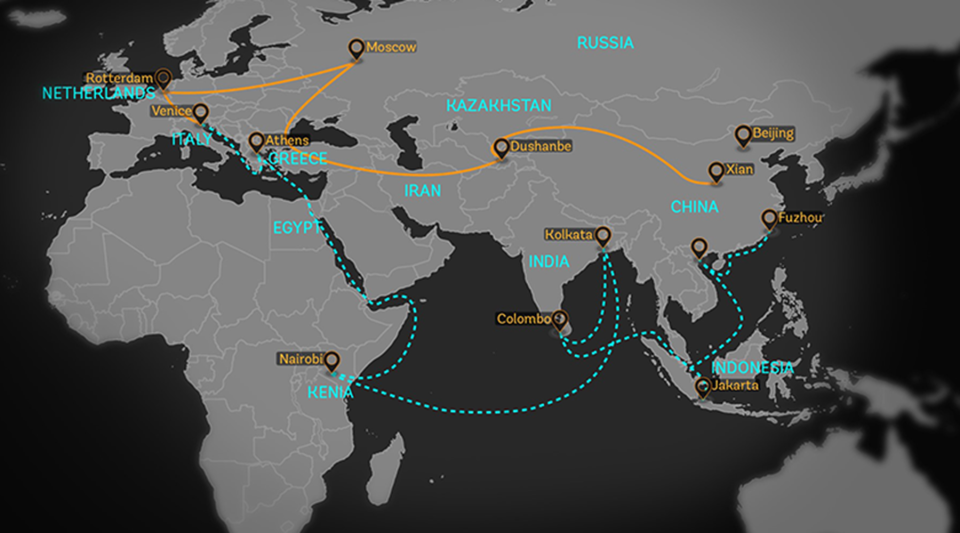Background
In October 2013, Chinese President Xi Jinping launched the One Belt, One Road (OBOR) initiative. It consists of a massive 4 to 8 trillion investment project spanning 60 countries and several decades. The objective is to strengthen transport connections between Asia and Europe (and indirectly also Africa) and also to open up the intermediate regions. It should allow the Chinese manufacturing industry to enter the value chain and to evolve into a producer of high-value products, based on regional suppliers and subcontractors who then supply the low-value components.
The BRI rests on two pillars. The first is maritime (Belt), Chinese companies have already invested heavily in European ports such as Piraeus and Zeebrugge. The second is continental (Road) with the development of rail and road connections from the Chinese heartland both south and west, with regular trains from Chongqing now arriving in Duisburg, Ghent and even Zeebrugge. The shift of transport streams to southern European ports or to continental forms of transport could have major consequences for the ports in the Hamburg-Le Havre range and the dependent European distribution centres in the Flemish-Dutch Delta (VND).
Research objective
Initially, based on a literature and field study of the planned and possible projects, the research wants to describe the possible effects of the BRI for Flemish logistics. Then, starting from a chain cost model, it wants to monetise the implications for Western European ports. The focus is on direct costs, time costs but also on external environmental costs. Finally, it wants to provide local, regional and supranational strategies for the companies and authorities involved in order to maximise the benefits of the BRI and to counteract the disadvantages. All this with an iterative feedback to the field of work in order to test the evolving insights.






